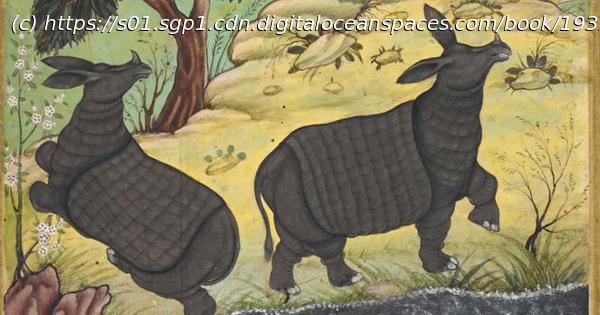Artwork from Babur’s memoirs are on display at the British Library.
One of the British Library’s most treasured manuscripts on display in its current exhibition Animals: Art, Science and Sound is a late 16th century copy of the Mughal emperor Babur’s autobiographical memoirs, Vāqiʻāt-i Bāburī, more often referred to as his Bāburnāmah (Book of Babur).
The emperor Zahir al-Din Muhammad Babur (1483-1530) is most famous as the founder of the Mughal Empire in the Indian subcontinent which he conquered and ruled from 1526. Driven from Central Asia while still a youth, he took Kabul in 1504 and made it the centre of his kingdom before moving east and defeating Ibrahim Lodi, Sultan of Delhi, at Panipat in 1526 and Rana Sanga of Mewar at Khanwa in 1527.
In between intense military activities, Babur somehow managed to find time to write his memoirs (Vāqiʻāt-i Bāburī). In these Babur records his ruthless victories, but at the same time writes unpretentiously of his personal feelings, revealing himself to be a scholar, a poet and a keen naturalist. Histories were already an established literary genre by this time as were encyclopedias which recorded the wonders of the universe. However this autobiographical record of Babur’s is unique with observations based largely on his own experiences.
Originally written in Chaghatai Turki, his memoirs are arranged chronologically by year and were translated several times into Persian but most famously in 1589 at the request of his grandson Akbar (r. 1556–1605) by Akbar’s chief minister ʻAbd al-Rahim Khan-i khanan.
The British Library is fortunate in possessing one of four known imperial copies of ʻAbd al-Rahim’s translation which were all made at the end of the 16th century and were illustrated by the most famous artists of the time.
Домой
United States
USA — Art From the pages of ‘Baburnama’, amazing illustrations of Hindustan’s birds and animals






